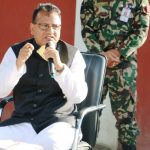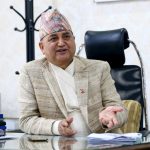In May 2014, Nepal government announced 72 new municipalities, marking a significant urban shift in Nepalese society. With already existing 41, Nepal now has 113 municipalities that host almost one-third of Nepal’s total population. Along with this announcement, government has also formed a Municipal Area Determination and Recommendation Committee (MADRC) under leadership of Professor Keshav Nanda Giri to recommend the Village Development Committees (VDCs) that fulfill the infrastructural criteria to become a municipality. The committee also has the responsibility to manage the disputes related to the boundaries of the municipalities. But there is an irony here. The formation of dispute resolution committee clearly reflects that no adequate home works have been done before.
During 1990-2001, 26 new municipalities were added, thus the total number of municipalities in Nepal was 58. This number includes four sub- metropolitan and a metropolitan city. In 2011, government had announced 41 new municipalities through the budget speech. However, some disputes on boarder boundaries, taxation authorities as well as the fear of burden possible in municipalities and loss of traditional cultures surfaced and as a result, the newly declared municipalities were never enforced in practice.
The recent decision to establish municipality has exposed two underlying questions. On the one hand, many municipal actors suspect that this decision will hardly be implemented. Whereas on the other hand the announcement of municipal governments may be seen as a challenge to the proposed federal system being discussed in the new constitution that is under way. It is particularly noteworthy that this decision has come at a time when there is a discussion on the federal system of governance. Even if the newly declared municipalities are enforced in practice, new constitution may require reconfiguring the entire structure and boundaries of the local governance, including the municipalities. This sort of likely repetition on the same work will consume the state resources and jeopardize the spirit of federalism.
An ideal urban centre requires the physical infrastructures for a variety of basic services, including health, education, transportation, communication and recreation. Several existing municipalities lack these facilities in Nepal and the newly declared municipalities do not meet these requirements. Several VDCs have been merged to fulfill only the population requirement provisioned by the Local Self- Governance Act 1999. Reports by the study team lead by Prof Suryalal Amatya and Padma Chandra Poudel has recommended the provision of sub- municipalities for the emerging urban centers that do not fulfill all the criteria to be a municipality. However this recommendation has been ignored by the government.
As per the new decision, 283 VDCs are being merged to form 72 new municipalities. However, several questions arise here: are all the people from these VDCs ready to pay local tax once they become municipalities? Were these people or former All Party Mechanism taking the de facto authority in VDC level decision making involved in this process? Are the issues of poor governance solved once a bunch of VDCS become a municipality? These are some fundamental questions which have remained unanswered in the policy decisions that created 72 new municipalities in Nepal.
The declaration of municipal areas without adequate preparation and consultation among local people and the lingering implementation practices has created dilemma on civil servants and local people. The governing system, budget, tax provision etc are different than VDCs in municipalities. People are reluctant to pay higher tax for the similar services offered by the VDC. Due to the low revenue generation potential in the new municipalities, the government will have to bear further responsibilities in these new municipalities.
Municipality, no doubt, symbolizes progress and development. Municipalities are the main centers to reflect the status of development and are of urbanization. However, these municipalities must be strong from infrastructural, social, economic and political perspectives. The tragedy of local government including municipalities in Nepal is the lack of election for more than a decade. Political parties, local government associations, civil societies, election commission and government itself are positive towards holding the local election. Political parties and the constituent assembly can discuss and agree on the structure of local government, and then mandate the government to hold the local election and improve the governance system at both municipalities and VDCs. This should be a priority of the government, rather than converting the VDCs into municipalities.
After the expiry of elected representatives in July 2002, the government of Nepal has tried successively a number of measures and mechanisms with an expectation of good governance and judicious use of resources at the local level. All Party Mechanism with representatives of existing political parties and officials at local jurisdiction are the major decision makers in these authorities. The proper consultation among these people will definitely contribute to solve the issues of boundaries and tax burden in the new municipalities.
However, it seems that these important issues are not properly addressed while making this decision. Despite having good intention, the decision has come at a wrong time, using a wrong process, whilst also ignoring the political contexts in which constitution making is under way.
Kamal Devkota is a Research Officer at Southasia Institute of Advanced Studies (SIAS), Kathmandu.






